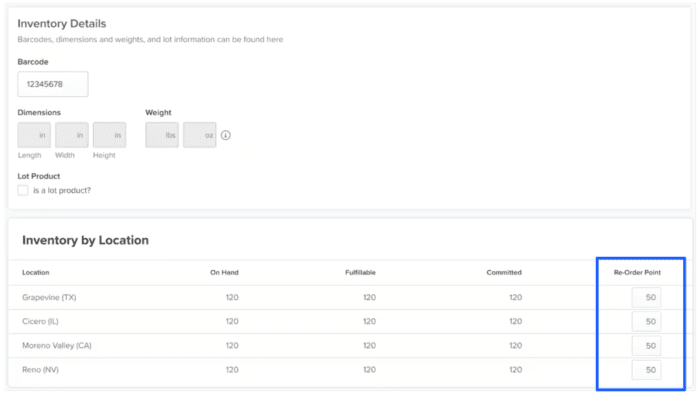Table of Contents
** Minutes
What is distributed order management (DOM)?
Core pillars of distributed order management to understand
Why distributed order management benefits retail
How to choose a distributed order management partner
Running a multichannel ecommerce brand means you customers can place orders on different platforms.
It’s up to you to find a way to fulfil all of those orders, and fulfil them quickly (for the sake of your customer satisfaction) and cost-effectively (for the sake of your profitability).
To achieve this, many brands turn to distributed order management. With the right combinations of technology and best practices, a distributed order management strategy can help your brand optimise order fulfilment across all your channels.
In this article, we’ll cover what distributed order management is, its core pillars, how it benefits ecommerce brands, how to choose a distributed order management partner, and more.
What is distributed order management (DOM)?
Distributed order management (or DOM) is an approach to processing and fulfilling orders that uses rule-based logic to optimise fulfilment for speed and cost.
Typically, brands will adopt a distributed order management system or software to orchestrate customer orders across sales channels, so that each is fulfilled on time, from the most ideal location, and at the lowest possible cost. These systems streamline the core functions of order management and fulfilment, including:
- Synchronizing order and inventory data in real time to avoid mismatches
- Processing orders from multiple channels
- Automating inventory management processes
- Accurate inventory forecasting to prevent stockouts and excess stock
- Sending reorder point notifications to ensure timely replenishments
- Fulfilling orders from the most strategically-placed fulfilment or distribution centres to reduce transit times
- Optimising inventory distribution across fulfilment locations
- Dropshipping in compliance with unique retailer requirements
- Merging multiple orders from the same customer to consolidate shipping
- Splitting shipments based on stock availability
- Processing and managing returns seamlessly
Distributed vs. traditional order management
Traditional order management systems (OMS) served their purpose in the early days of ecommerce. However, in an ecommerce landscape that’s been permanently reshaped by omnichannel retail, these legacy systems have become outdated.
Some of the most important differences between a traditional OMS and a distributed order management system are:
- The number of supported sales channels: Traditional OMS was designed to manage orders coming from one channel at a time, which can create complications for multichannel brands. A distributed OMS allows for omnichannel order management, so you can view and manage your orders from multiple sales channels in one place, and offer fulfilment options such as buying online and picking up in-store, shipping from store, returning items to brick-and-mortar stores, and more.
- The technology: While a traditional order management system may feature outdated software or tools, distributed order management systems are equipped with advanced capabilities to optimise fulfilment operations using logic-based rules and order routing.
- The inventory visibility: A traditional OMS lacks the capability to view and update inventory data in real time, which can lead to out-of-sync data that results in overselling and stockouts. A distributed order management system automatically syncs inventory data across all your sales channels and fulfilment centres to keep information on inventory levels updated, so your listings are automatically updated across all your sales channels.
DOM success stories with ShipBob
To give you a better idea of how distributed order management systems work, here are a few examples of ShipBob customers that have leveraged ShipBob’s distributed order management software and fulfilment solutions to improve their operations.
PetLab Co.
For PetLab Co., being a multichannel brand is vital to reaching more pet lovers. By leveraging ShipBob’s distributed order management capabilities, they were able to streamline fulfilment across both their DTC website and B2B channels such as Chewy and Amazon through a single platform.
“Fulfilling orders quickly through our site and marketplaces is a must-have, not a nice-to-have for our business. From the beginning, we knew that the early Chewy orders would need to go through our fulfilment partner — all of our retail distribution orders from Chewy go through ShipBob’s fulfilment centres today. Selling on marketplaces is challenging enough, and ShipBob’s ability to service both D2C and B2B has enabled us to build more consistent procedures and practices across our different sales channels.” — Stephanie Lee, Co-CEO at PetLab Co.
Sharkbanz
After trying both mom-and-pop and more established fulfilment solutions, Sharkbanz has come to rely on ShipBob for both DTC and retail fulfilment. With ShipBob’s omnichannel fulfilment solution, the brand easily fulfils all its retail, DTC, and B2B orders with a single partner. ShipBob even helped them prep their FBA orders to ensure that their inventory shipments were in compliance with Amazon’s strict requirements, and let them store inventory in fulfilment centres in the UK and Australia to fulfil international orders faster while keeping its shipping costs low.
“We’re currently fulfilling 100% of our orders through three of ShipBob’s fulfilment centres, as we’ve done for the last couple of years. With ShipBob, we can fulfil both DTC orders and orders for our retail partners (including Leisure Pro, Divers Direct, Swim Pro, and small surf shops in Hawaii) through a single solution. It’s been a massive help to centralise and funnel everything through one reliable fulfilment partner, especially going into next year.” – Nathan Garrison, Co-Founder and CEO of Sharkbanz
Semaine Health
In addition to automating fulfilment for retail partners like Target and Walgreens, Semaine Health has significantly cut transit times and shipping costs on DTC orders by leveraging ShipBob’s distributed order management solutions. The brand strategically allocates inventory across 4 of ShipBob’s US fulfilment centres, and ShipBob’s software automatically forwards each order to the fulfilment centre closest to that’s order’s end destination.
By fulfilling orders closer to end customers, Semaine has shaved 1.6 days off their average order transit time, and reduced average fulfilment cost by $2 per order.
“We literally would not have been able to expand this year without ShipBob. In the past six months, we’ve quadrupled the number of orders that we’re shipping out. You might expect that that jump in volume would cause issues – but fulfilment has only gotten faster and better. That’s not how it typically works! ShipBob’s solutions have been game-changing for our brand.” — Matt Crane, Co-Founder and Chief Science Officer at Semaine Health
Core pillars of distributed order management to understand
Distributed order management is a broad concept, and can involve many functions, capabilities, and activities. Here are three key pillars that distinguish distributed order management systems from other systems.
Real-time inventory management
Being able to see where your inventory is at all times is essential for distributed order management. DOM systems provide you with real-time inventory tracking to enhance visibility across the network, so you can see where your inventory is and exactly how many units you have left at each fulfilment centre.
This visibility benefits your brand in a few ways. First, it enables you to effectively manage inventory allocation and replenishment. For instance, if you find that inventory is running out in a certain fulfilment centre, you could reallocate some units from other locations that have the item in stock. This enables you to prevent stockouts and always ensure that you have optimal stock levels across your fulfilment network.


ShipBob’s merchant inventory management dashboard
Second, you can always see when inventory is running low, which allows you to time your reorders accordingly. You can even set reorder point notifications, so you get an alert when stock dips below a certain level. That way, you never have to worry about accidentally running out of stock because you forgot to reorder inventory.
IMAGE WITH A CAPTION DESCRIBING IT AS SHIPBOB’S DASHBOARD – reorder point


ShipBob’s reorder point notification function
Third, DOM systems allow you to sync your inventory data across all your sales channels and fulfilment networks. That way, you maintain a single source of truth about inventory availability and ensure that your listings are automatically updated with the most accurate stock status. In other words, you won’t accidentally end up selling SKUs that are already out of stock.
Order orchestration and optimisation
The key deliverable of any DOM system is its ability to optimise and automate your order management processes.
DOM systems integrate with your sales channels so that orders are automatically processed once they are placed on a sales channel.
These systems then use logic-based rules to automatically route each order and manage the most complex fulfilment scenarios. This means that the software considers various factors, such as stock availability and delivery location, to determine the ideal fulfilment location from which to fulfil each order. That way, orders are fulfilled from locations that are closest to the customer where the item is in stock, which reduces transit times while minimising shipping costs.
Seamless omnichannel fulfilment
Distributed order management systems seek to enhance the omnichannel customer experience. They support omnichannel order management by integrating with multiple sales channels and providing multiple fulfilment options. They provide merchants with comprehensive data on all of your orders coming from all of your sales channels, so you can easily manage all your DTC, marketplace, and B2B orders in one place.
DOM systems also help you coordinate and streamline the many multi-channel fulfilment you may offer customers, including:
- Buy online, pick up in store (BOPIS)
- Buy online, ship from store
- Buy online, ship to store
- Buy online, return in-store
This gives your customers more flexibility to choose between the fulfilment options that work best for them, and helps you deliver a great experience to customers, no matter where they shop.
Why distributed order management benefits retail
Here’s a quick look at some of the main ways your business can benefit from distributed order management.
Sell through more channels more seamlessly
If you’re hesitant to start selling on new channels because you’re nervous about how it will affect your order processing, fulfilling, and shipping operations, never fear. Distributed order management systems are designed to make it easier to run logistics for multiple channels, all from a single platform.
Merchants should be able to integrate their DTC websites, retail marketplaces, social sales platforms, and more with their DOM system. From there, the system becomes your source of truth for inventory and order data, and lets you optimise fulfilment for customers on every channel you sell through.
Improve your inventory management
DOM systems allow you to optimise and simplify your inventory management. You can get real-time visibility into your inventory locations and stock levels, enabling you to identify inefficiencies and bottlenecks, anticipate inventory needs, and replenish your inventory accordingly. This helps you not only prevent stockouts but also avoid overstocking.
Reduce transit times and shipping costs
With a DOMS, you can strategically distribute your inventory to store it closer to your customers, and automatically route orders to the fulfilment centre closest to the end customer. Allocating inventory and fulfilling orders this way lets you cut down transit time and save on shipping costs.
Streamline B2B fulfilment
DOM systems also allow you to manage and fulfil your B2B orders more effectively. You can integrate them with your preferred EDI platform and automate significant portions of your B2B order management and manual processes. You can use these systems to ensure that B2B orders are fulfilled according to each retailer’s compliance guidelines, simplifying your retail distribution.
How to choose a distributed order management partner
There are many logistics partners on the market that offer their customers distributed order management. Here are some steps to help you select the right partner for your brand.
Evaluate your business needs and goals
Start by defining what your business need in a DOM provider. For example, do you only need a system that will support your in-house fulfilment efforts? Or do you need a provider who can handle the entire order fulfilment process on your behalf?
You’ll also want to establish specific objectives so you can identify the best provider to help you achieve them. For instance, you may want to cut down on carrying costs, improve order accuracy, or optimise shipping speeds.
When you clearly define the goals you want to achieve, you can focus on evaluating providers that offer solutions and features that address your specific needs.
Integration capabilities with existing systems
The beauty of a distributed order management system is that it manages orders across multiple channels and platforms. This means that any good DOM system will integrate with all your existing systems and sales channels, so there is seamless information exchange between all your tools.
ShipBob’s solution, for example, integrates with leading ecommerce platforms and marketplaces as well as other essential platforms to manage all of your order fulfilment in one place.
ShipBob’s partner ecosystem ensures that you can sell through multiple channels, including your Shopify store and even your TikTok Shop. It also enables you to deploy ERP (enterprise resource planning) solutions like Netsuite, manage returns using AfterShip, and access shipping rates from leading couriers like DHL, UPS, and FedEx.
Prioritize customer service and support quality
Even if a system boasts all the DOM capabilities you’re looking for, it won’t matter if you’re constantly dealing with glitches and poor customer service. Your DOMS provider should be able to proactively walk you through setup and implementation and provide hands-on support if you experience any issues further down the line.
Brands using ShipBob’s warehouse management system, for instance, enjoy hands-on training with fulfilment experts who will walk you through the process of setting up the system in your brand’s warehouse. Our experts can even provide suggestions and guidance on how to optimise various aspects of your operations including your warehouse setup.
ShipBob’s leading distributed order management services
ShipBob offers comprehensive fulfilment solutions along with powerful proprietary software to enable distributed order management. Moreover, we employ DOM principles across our operations to provide our clients with industry-leading fulfilment services.
Omnichannel fulfilment
ShipBob’s omnichannel fulfilment services help you deliver orders seamlessly, no matter which channel you choose to sell.
Beyond your DTC orders, ShipBob can power your brand’s retail distribution and dropshipping for major retail partners like Walmart and Target, as well as fulfil orders from your social channels, online marketplaces, and Amazon FBM.
Our software integrates with leading ecommerce platforms and marketplaces – including Shopify, Amazon, and even TikTok Shop – to seamlessly process and manage all of your orders in one place. With ShipBob at the helm of your distributed order management, you can put omnichannel order fulfilment on autopilot and hand off the complexities to the experts.
“We started looking for a fulfilment partner that could support multichannel businesses like ours. We knew ShipBob had DTC mastered, but in talking with them, we discovered that they were investing heavily into B2B fulfilment as well. We were impressed by the capabilities they developed, and we were excited about where they were going in the future.”
Tyler Stelter, COO at Storelli Sports
Automated order processing
ShipBob’s platform integrates with major ecommerce platforms and tools to automatically pull order data and send orders out to a fulfilment centre to be picked and packed. This frees merchants from manually entering all order data, minimises lead times between order placement and fulfilment, and even ensures that each order is fulfilled from the optimal location.
“ShipBob offers fast order processing, which is important when we’re getting hundreds of orders each day. We wouldn’t be able to fulfil the volume we’ve seen — up to nearly 13,000 orders per month — on our own. We’ve had three holiday cycles with ShipBob, and the most recent Q4 was our smoothest yet.”
Manuel de la Cruz, CEO at Boie
Distributed fulfilment network
ShipBob offers warehousing and distribution services through a network of distributed warehouses and fulfilment centres across the U.S. and around the world. You can use ShipBob’s Ideal Inventory Distribution tool to calculate the most strategic split of inventory across ShipBob’s network, and then strategically allocate your inventory accordingly to minimise shipping times and costs.
“We’ve been able to allocate our inventory across 4 of ShipBob’s fulfilment centres in the United States, which cut our shipping times by a third – from 5.2 days down to about 3.6 days. Not only has transit time dropped, but at the same time we reduced fulfilment costs by over $2 per order compared with our old 3PL. This combination has been key to profitable growth this year.”
Matt Crane, Co-Founder and Chief Science Officer at Semaine Health
Affordable 2-day shipping
ShipBob’s 2-day express fulfilment makes it easier than ever to meet customer expectations – even if you’re shipping from just one fulfilment centre. With 100% coverage across the continental U.S., you can provide affordable 2-day delivery across all your sales channels and drive more sales with 2-day badging.
“Because we sell a high-quality anti-aging product, we want to provide high-quality service throughout the whole customer experience — and that includes a quick and smooth delivery that shoppers have come to expect. ShipBob’s 2-Day Express ship option lets us meet these expectations for US customers, and compete with the likes of Amazon for speedy fulfilment.”
Maria Osorio, Logistics and Operations Director at Oxford Healthspan
For more information on how ShipBob’s fulfilment solutions can help you streamline your multichannel fulfilment, click the button below.
Distributed order management FAQs
Below are answers to commonly asked questions about distributed order management.
How does distributed order management benefit small to mid-sized ecommerce businesses?
Small to mid-sized ecommerce businesses can use distributed order management to streamline fulfilment across however many sales channels they sell through, as well as optimise their fulfilment for efficiency and cost.
Can distributed order management systems integrate with ecommerce platforms?
Yes. A good distributed order management systems will integrate with major ecommerce platforms like Shopify, BigCommece, WooCommerce, and more to seamlessly pull order data and kickstart the fulfilment process automatically.
How can ShipBob help with distributed order management?
ShipBob’s fulfilment solutions leverage distributed order management principles to deliver seamless omnichannel fulfilment, real-time multichannel inventory visibility, and automatic order processing.
What’s the difference between an OMS and a DOM?
An OMS is a traditional order management system that typically supports order management for single channels and coordinates fulfilment for one location.
Meanwhile, a distributed order management system (or DOMS) supports omnichannel order management and coordinates fulfilment across multiple locations. It comes with added capabilities for order routing and orchestration.



